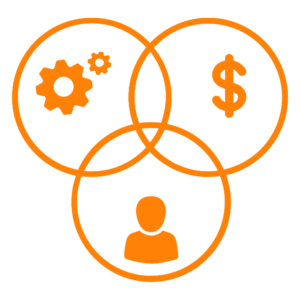Design and Design Thinking
Episode #1 of the course User experience design for non-designers by Lyndon Cerejo
Welcome to this course about design and user experience!
In 2011, a Japanese plane with 112 passengers went into a nosedive of 6,000 feet in 30 seconds, flying virtually upside down. The Japan Transport Safety Board (Japan’s equivalent of the US NTSB) report said that the first officer used the wrong button when trying to unlock the cockpit door to let the captain back in. The problem was that the rudder control and cockpit unlock control were similar in operation and near each other. That’s bad design.
Chances are, you often encounter bad design (although less life threatening) in your daily life. It could be a door that makes you wonder if you need to push or pull to open it or frustrating websites and app experiences. While bad design happens, there are intentional ways to design good experiences, and that is the focus of this course.
I’m Lyndon, a certified user experience strategist and author, and I have helped Fortune 500 companies with their user experience design needs.
Over the next ten days, we will take a closer look at design and user experience, which will be useful for anyone interacting with design and designers (I’m looking at you, project managers, developers, and business analysts) or those who are thinking of getting into the field.
You will learn about the importance of design, the different steps in the design process, and design roles. At the end of this course, you will not only be familiar with the steps in design, but you will also start noticing and wanting to fix the elements of design around you.
What Is Design?
“Design is not just what it looks like and feels like. Design is how it works.” —Steve Jobs
There’s no one definition of design (go ahead, google it!), so here’s the way I like to think about it: Design is a process to create or improve a product or service that solves a problem or addresses a need of businesses and users.
The definition highlights the following points:
• Design is not a random “creative” activity, but it is a process. There is a science and an art to it.
• There’s a problem that needs to be solved or a need that has to be met.
• Design benefits both the business (that pays for the design) and their users (who use the design).
Just as there are many definitions of design, there are many variations of the design process. However, they follow a similar pattern and steps, reflected in the design thinking approach, which takes the design process and methods traditionally used by designers and opens it up to a wider audience of non-designers to creatively solve problems and innovate in business.
Design Thinking
Design thinking is a human-centered approach that starts by finding opportunities while focusing on the needs of people first (bottom), and then meeting those needs through the use of the technology (top left), provided it is economically viable for the business (top right).

The design thinking process consists of these five steps:

Source: Stanford d.school
1. Empathize: Understand the experience of the user for whom you are designing. This is done through observation, interaction, and immersing yourself in their experiences. This is about walking a mile in their shoes!
2. Define: Analyze and synthesize the findings from your empathy work in order to form a user point of view that you will address with your design. This is where you clearly define the problem you are trying to solve.
3. Ideate: Brainstorm and explore a wide variety of diverse solutions. Focus on generating a large number of diverse possible solutions first, while technology feasibility and business viability take a backseat. The solutions are then prioritized based on impact to the user, technology feasibility, and business viability.
4. Prototype: Bring prioritized ideas to life rapidly so users, the team, and other stakeholders can interact with them and not only learn from these interactions but also develop more empathy.
5. Test: Get feedback on your solutions, refine the prototypes, learn more about the user, and refine your original point of view. It’s not uncommon to go back to the drawing board.
The design-thinking, people-first approach is useful for identifying opportunities and potential solutions and envisioning desirable products or services that people actually want to buy.
Tomorrow, we will go a step further to understand how user experiences are designed.
Here’s to exercising your design eye!
Lyndon
Recommended book
The Design of Everyday Things by Don Norman
Share with friends

